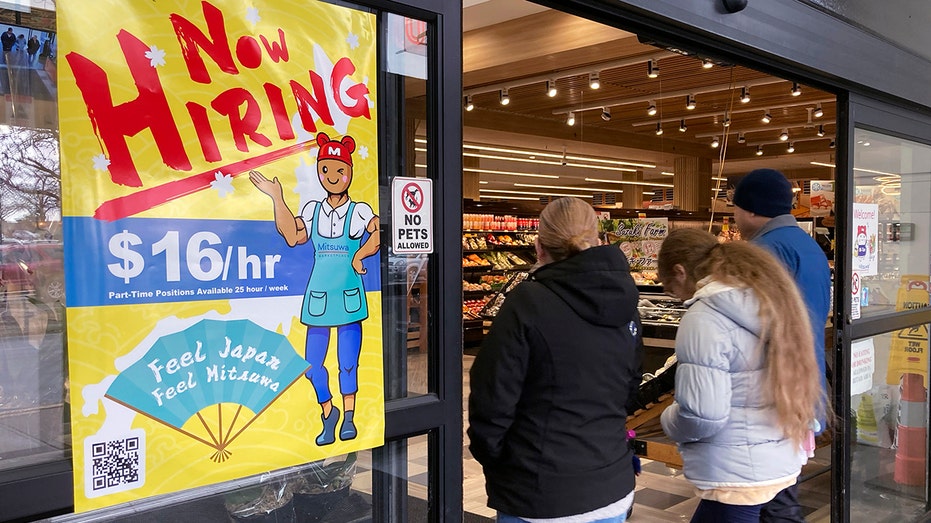U.S. job growth was weaker than previously projected over much of the past year.
The Bureau of Labor Statistics on Wednesday revised down its total tally of jobs created in March by 306,000, indicating that payroll growth was likely slower than initially believed in the period from April 2022 to March 2023.
That suggests the economy likely added an average of 311,500 jobs per month during that time period – below the previous 337,000 estimate. On a monthly basis, that amounts to about 25,000 fewer jobs.
WORKERS NOW DEMANDING NEARLY $80K TO START A NEW JOB
The agency’s annual benchmark revision is mostly derived from state unemployment tax records that employers are required to file. The figure released Wednesday is preliminary and may be updated when the government releases the final figure in February 2024.
“The revised payrolls data are more consistent with evidence of a softening labor market in late 2022 and early 2023, like higher layoff announcements and jobless claims; income tax withholding fell in year-over-year terms in November and December, further evidence that the soft patch was concentrated in last year’s holiday season,” said Bill Adams, chief economist at Comerica Bank.
“But even with downward revisions, employment was growing rapidly in the year through March.”
The revisions were widespread across industries.
AMERICANS BURNING THROUGH EXCESS SAVINGS FROM THE PANDEMIC, SF FED STUDY SAYS
Employment in the transportation and warehousing sector saw the biggest downward revisions, with payrolls lowered by 146,000. Employment was revised down by 116,000 in professional and business services, by 85,000 in private education and health services and by 46,000 in leisure and hospitality, the industry hit the hardest by the COVID-19 pandemic.
Some sectors actually experienced more robust job growth last year than previously estimated. Payrolls were revised up by 48,000 in wholesale trade, 38,000 in retail and 30,000 in construction.

The Federal Reserve is closely watching Bureau of Labor Statistics data for evidence that the labor market is finally softening after months of surprisingly healthy job gains as policymakers try to wrestle inflation under control. Although the consumer price index has cooled from a peak of 9.1% in June 2022, it remains about two times higher than the pre-pandemic average despite 11 interest-rate hikes.
The latest data indicates that the job market isn’t quite as rosy as previous reports indicated – a potentially welcoming sign for the U.S. central bank in its war against inflation.
Read the full article here









